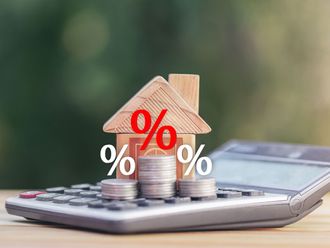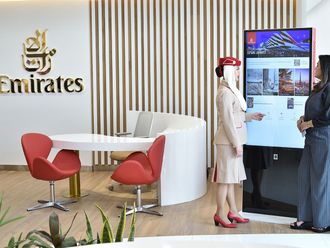DUBAI: Qatari banks are in a bind.
On the one hand, they need to finance building projects for the 2022 soccer World Cup. On the other, they must attract more deposits to match their loans.
Lenders seeking to lure money into their coffers to meet a central bank deadline have driven the local inter-bank rate to among the highest in the Gulf. However, their efforts are being undermined because loans are rising much faster than in Saudi Arabia and the United Arab Emirates.
The Dec. 31 deadline was set to tackle the increased risk in the banking system after oil prices sank to about $28 a barrel in early 2016. Qatar, the world’s largest exporter of liquefied natural gas, ran down about 30 billion riyals ($8.3 billion) in deposits to prop up public spending from 2015. Yet banks have kept lending to help support the $200 billion spending plan in preparation for the World Cup.
Those conflicting needs mean the central bank may have to soften its demands, according to Chiradeep Ghosh, an analyst at Securities & Investment Co. in Bahrain. Last year the Qatari government said the deadline may be postponed until the end of 2018 “given liquidity issues faced by Qatar’s banks.”
“A relaxation or an extension in the implementation of the regulation is a possibility on a case-to-case basis as most banks may struggle to comply,” he said. “It will be difficult for Qatar to cut spending considering its commitment to the World Cup, so strong bank lending will continue.”
Qatar’s interbank rate, which was at about 1.95 per cent on Monday, is about 50 basis points higher than the rate in the neighbouring UAE. Earlier this year, it climbed above 2 per cent for the first time since 2010. Even so, overall lending continues to grow, increasing 13.2 per cent in February from a year ago, according to central bank data, compared with 0.1 per cent in Saudi Arabia and 5.4 per cent in the UAE.
That’s left the average loan-to-deposit ratio at the nation’s 18 banks at 113.4 per cent as of February. Saudi Arabia’s ratio stands at 88.1, while banks in the UAE have matched loans to deposits with a 100.3 per cent rate, central bank data show.
“Liquidity will remain under pressure in Qatar over the rest of the year, while it is improving in most other countries in the GCC,” said Jaap Meijer, head of equity research at Arqaam Capital Ltd. in Dubai.












